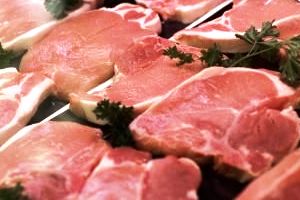Meat from new pig breeds – tender and delicious

New pig breeds provide meat that is tender and tasty. Production of high-quality meat from alternative pig breeds may be fertile ground for new Danish niche products.
What happens when you cross a Hungarian pig with a sheepskin coat with one of the traditional Danish pig breeds? Or, if you mate a normal Danish pig with the dark-skinned Iberian pig? This is the question scientists from Aarhus University decided to investigate in cooperation with the University of Copenhagen and the Danish Meat Research Institute at the Danish Technological Institute.
The aim was to identify differences in flavour, tenderness, texture, water distribution, fatty acid composition and metabolic products. The results from the research will be presented at a workshop on 31 May at the Aarhus University’s Research Centre Aarslev on Funen.
For years, Denmark has been able to deliver pork of a uniform and high quality, but there is a growing trend among consumers that they would like unique niche products. The introduction of new, alternative pig breeds can open the door for the development of such new gourmet meat products. The scientists therefore examined meat from crosses of boars of the Iberian breed and the Hungarian curly-haired hog (Mangalitza) and sows of the Duroc and Landrace/Yorkshire crosses produced under Danish conditions.
Flavour and chemistry studied
Meat and meat products from the various crosses were compared by the scientists in a number of detailed chemical and physical analyses. The flavour of the products was assessed by sensory analysis. It turned out that the meat from the crossings with the alternative breeds was tender and delicious and had a good texture.
Meat and meat products from the various crosses were compared by the scientists in a number of detailed chemical and physical analyses. The flavour of the products was assessed by sensory analysis. It turned out that the meat from the crossings with the alternative breeds was tender and delicious and had a good texture.
The chemical characterization of the meat showed that offspring of pigs crossed with the Iberian breedhad a slightly different profile of metabolic products than traditional Danish pigs. This could indicate that the exotic crosses are less sensitive to stress, which may explain the improved texture of meat from these pigs.
The chemical and flavour analyses showed that the different pig breeds did not have significant differences in their composition of flavour substances.
During the project, the scientists also examined the effect of high-pressure processing of the meat. High-pressure treatment of meat at 5000 to 6000 bar effectively kills bacteria and safe meat products with a longer shelf life can be produced without heat treatment. Pressure treatment also affects the meat texture and water-binding capacity, which makes it possible to produce meat products with less salt and fewer additives. The longer shelf life means that freezing and consequent loss of quality can be avoided.
The project was supported by the Ministry of Food, Agriculture and Fisheries, Svineafgiftsfonden and Promilleafgiftsfonden.
The workshop will be held on 31 May 2012 at Aarhus University’s Research Centre Aarslev. Besides presentations of the results, there will be the opportunity to taste the new types of pork with and without high-pressure treatment. Programme and registration is available here.
Further information: Postdoc Ida Krestine Straadt, telephone: +45 8715 8368, email: Ida.Straadt@agrsci.dk or Hanne Christine Bertram, telephone: +45 8715 8353, email: HanneC.Bertram@agrsci.dk, both at the Department of Food Science.
Text: Janne Hansen
Source: Aarhus University











